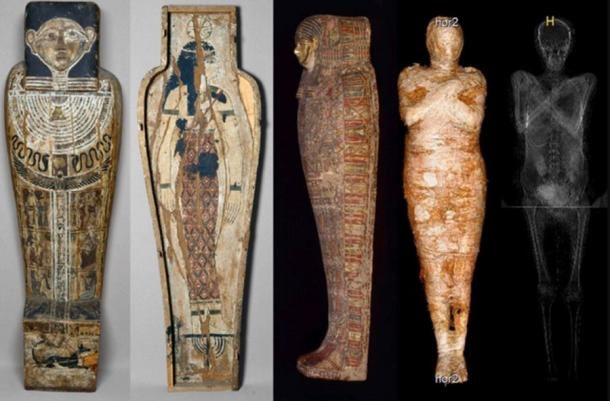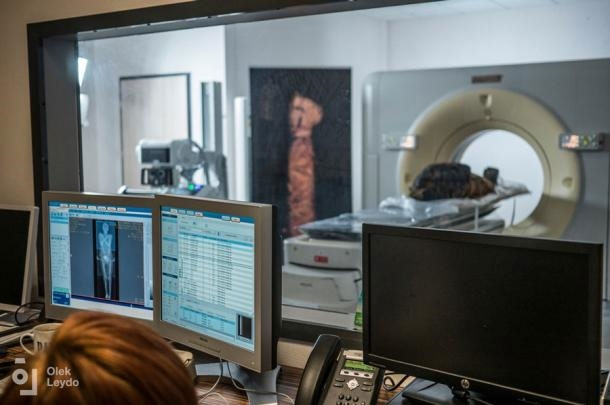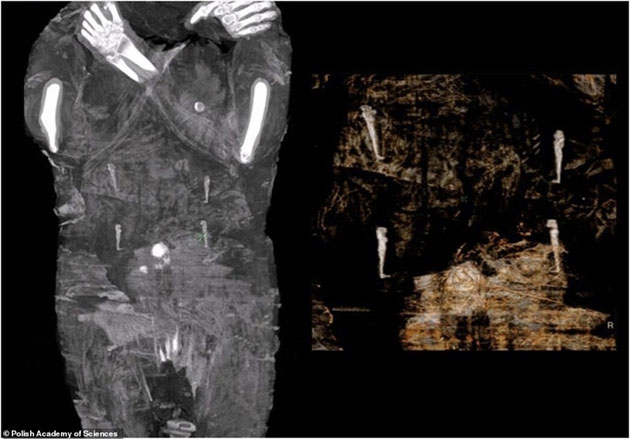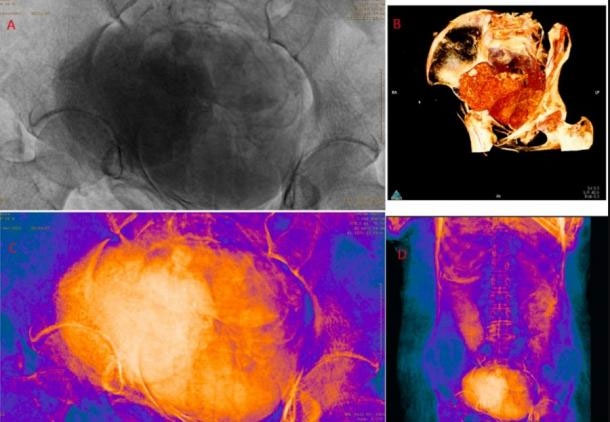Archaeologists from the Polish Academy of Sciences are conducting the Warsaw Mummy Project – scanning all the mummies in the museum, and they have discovered the world’s first mummy with a fetus.

The research team examined the mummy, coffin, and the wrappings of the mummy. (Image: Polish Academy of Sciences).
The world’s first mummy with a fetus was unearthed in the 1800s and is displayed at the National Museum in Warsaw, Poland. In late 2016, archaeologists scanned the remains of a fetus approximately 26 to 30 weeks old within a 2,000-year-old Egyptian female mummy using CT scans and X-rays. At that time, no researchers could decipher the mystery of how the fetus was preserved in the uterus of the female mummy. Typically, when Egyptians mummified a body, they would remove all internal organs and only leave the heart inside the mummy.
The female mummy was carefully wrapped in fabric and decorated with “amulet” patterns excavated from the Royal Tombs of the ancient city of Thebes in Upper Egypt, dating back to the first century BC – the era of Queen Cleopatra’s reign. Researchers believe this female mummy belonged to the upper class of society at that time.

The research team has scanned multiple times the pregnant mummy found for the first time in the world. (Image: Journal of Archaeological Science).
Recently, researchers have unraveled the mystery of how the fetus was preserved inside the uterus of the 2,000-year-old Egyptian mummy. To dry the corpse, the embalmers covered the woman’s body with a natural sodium salt compound called natron.
This natron powder is used like baking soda in cooking, medicine, and agriculture, and was particularly widely used in prehistoric times in Egypt, the Middle East, and Greece for glass production and mummification.

The abdomen of the mummy has amulet plates. (Image: Polish Academy of Sciences).

The abdomen of the mummy in a series of scans by scientists. The fetus is visible as a bright mass in the images. (Image: Polish Academy of Sciences).
Natron acts as a natural disinfectant and desiccant (drying agent); after natron penetrated the body of the pregnant woman, “it activated formic acid and other synthetic substances” within the uterus, creating perfect conditions to preserve the stillborn fetus in the mummy. The fetus was perfectly preserved in the uterus of the female mummy, further demonstrating the ancient Egyptians’ exquisite mummification techniques.


















































